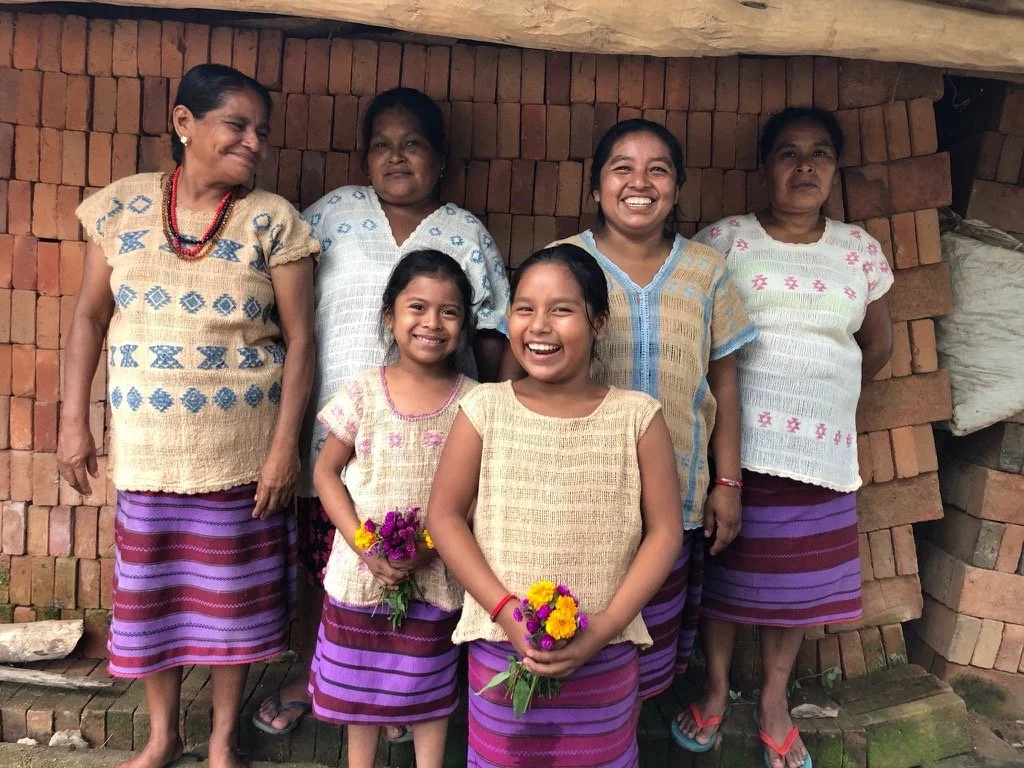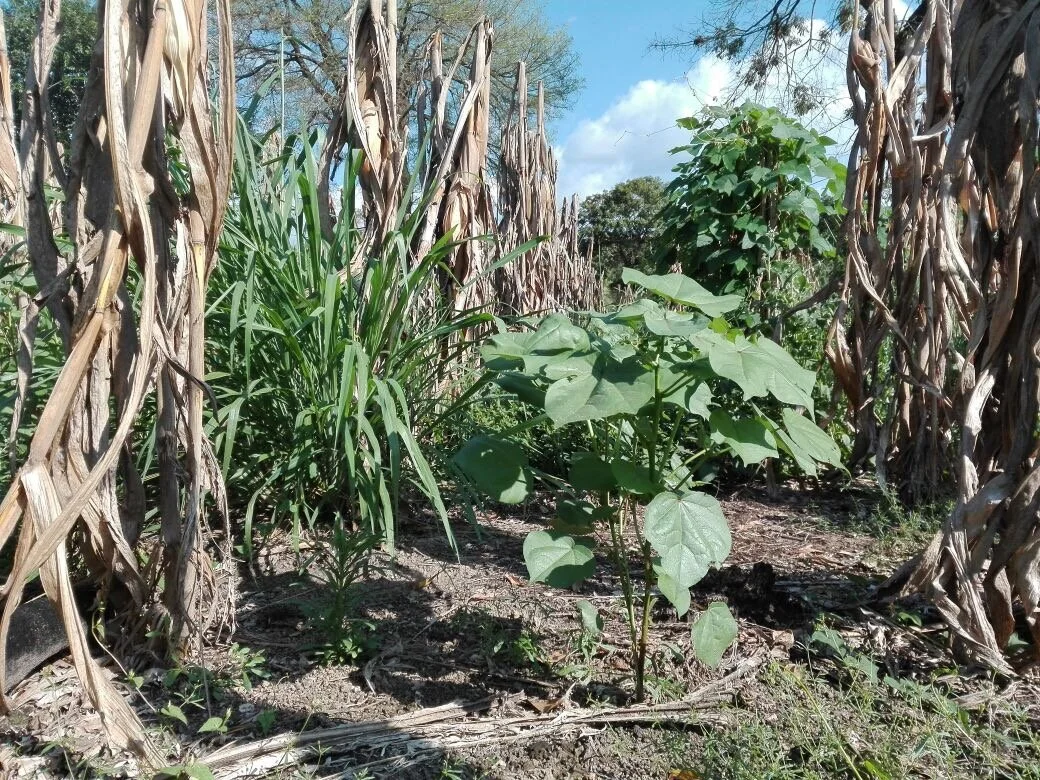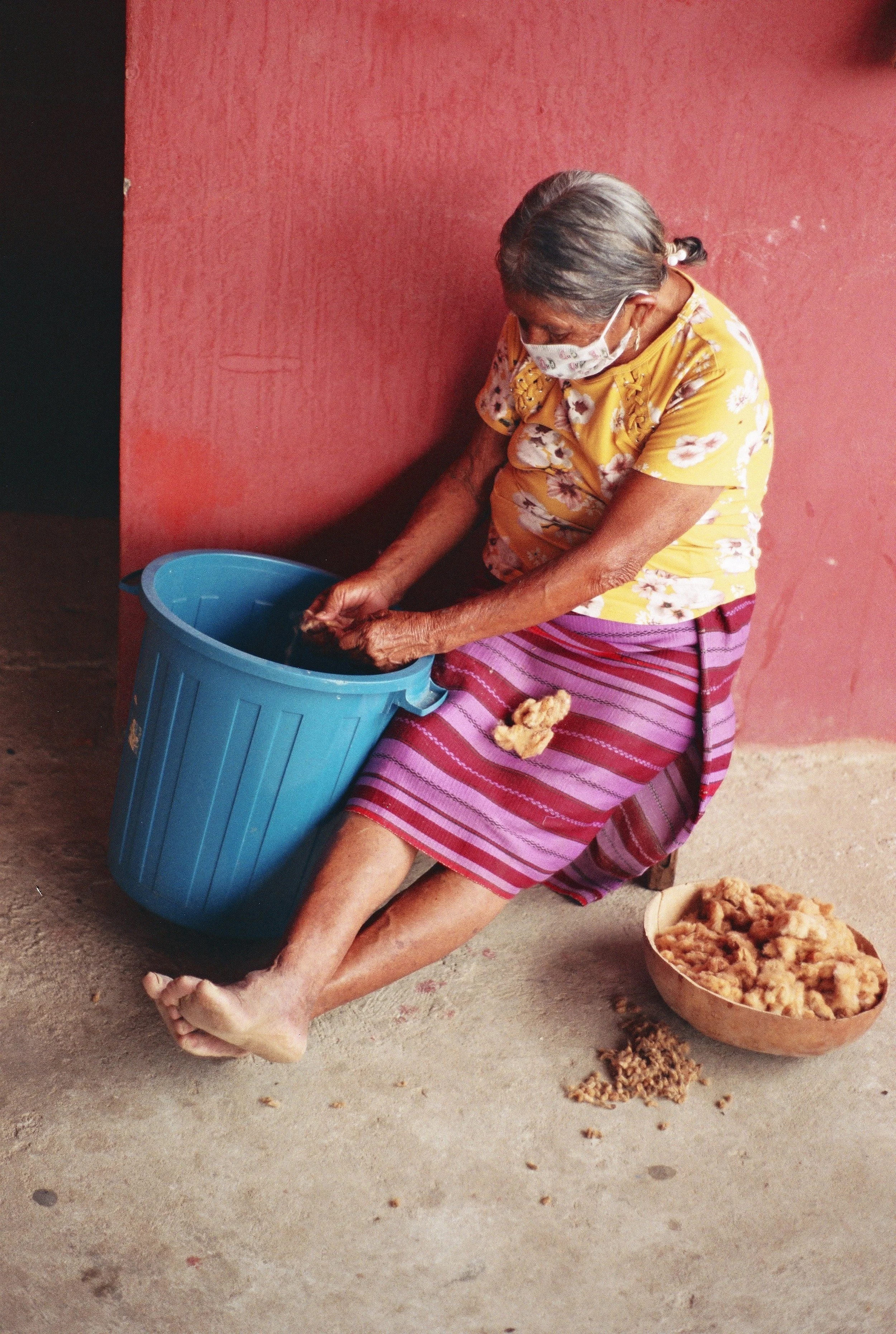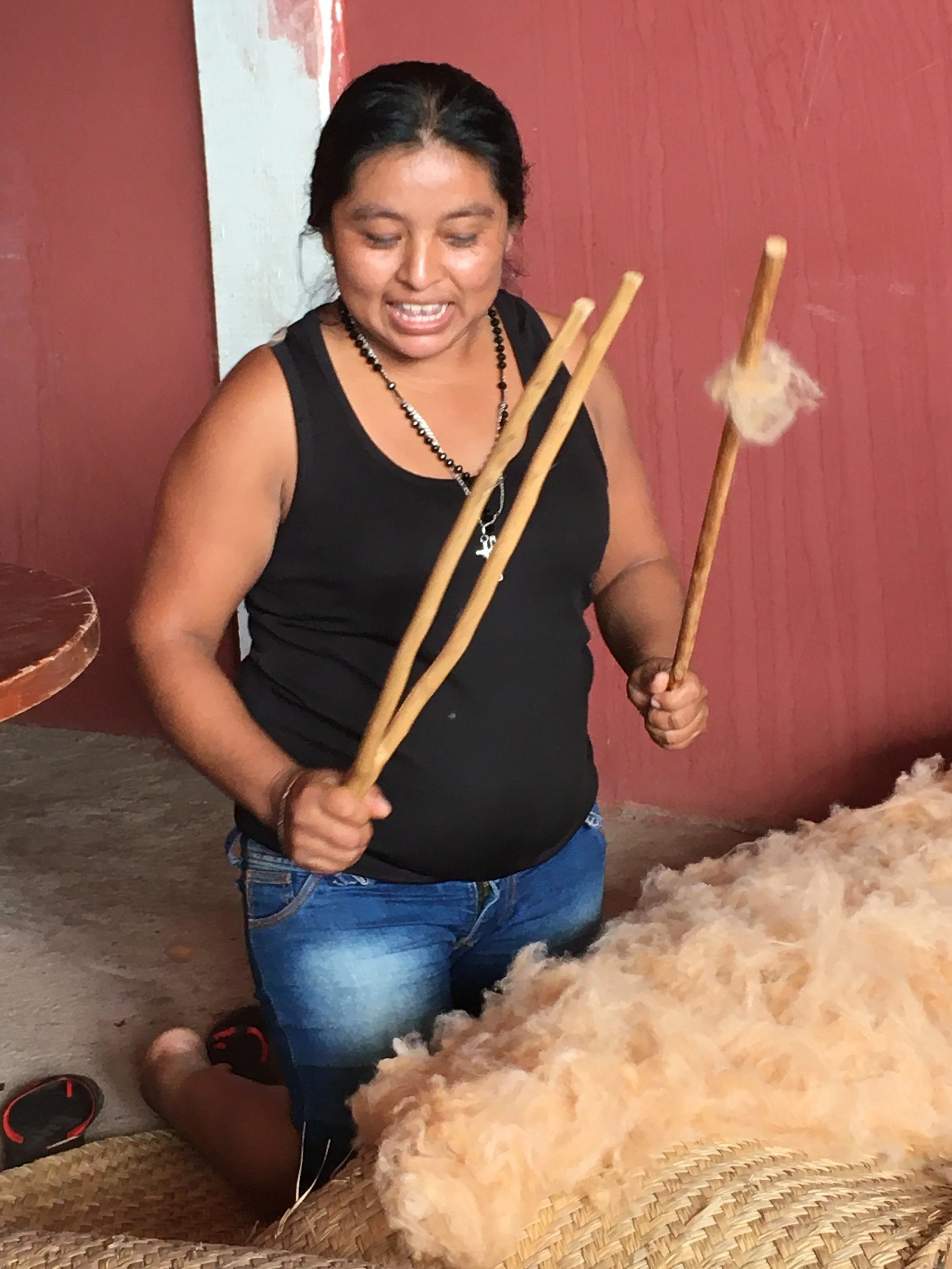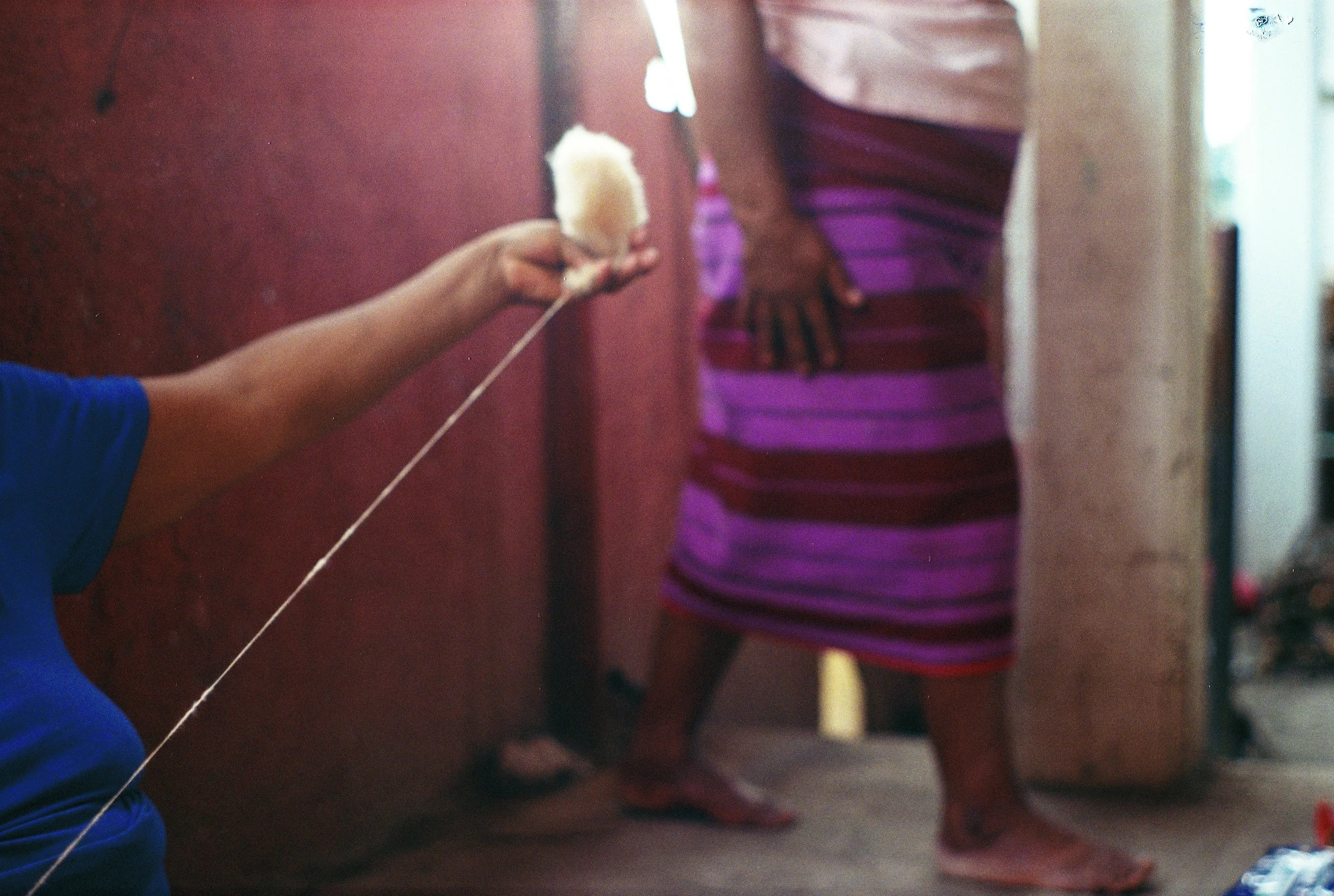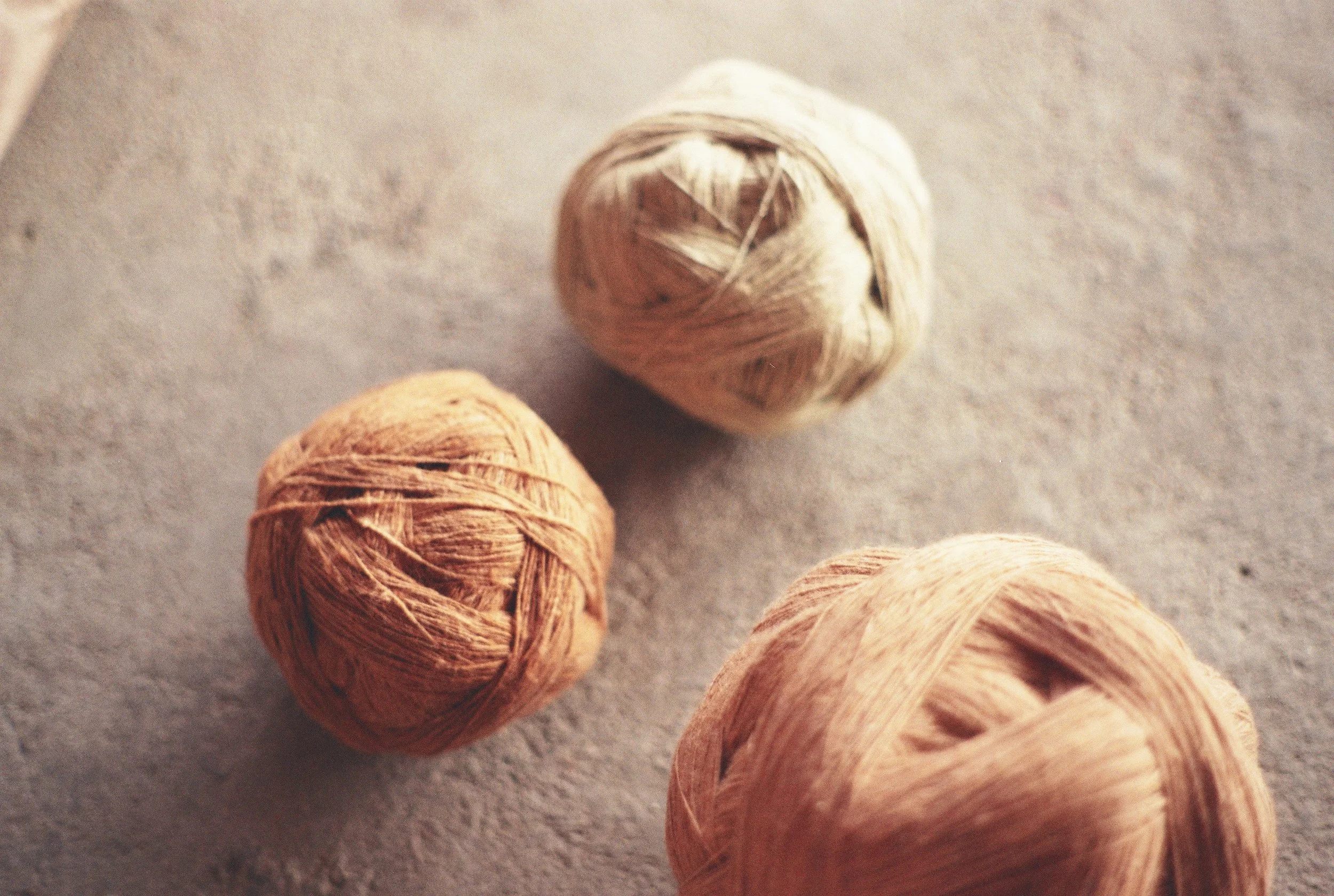Artisanal Cotton Procession from Harvest to Huipil
Written by Margaret MacSems for Thread Caravan
Katyi Ya’a is an artisan collective in San Juan Colorado, Oaxaca, who use a drop spindle and backstrap loom to create textiles exclusively from native cotton, thus conserving the traditional skills as well as the bio-cultural patrimony of the costal Mixtecs.
The native-colored cotton that Katyi Ya’a uses is grown by the farmer group Nu’u Ndito on the coast of Oaxaca where they live. The production is entirely rain fed and uses no chemical inputs. In this way, the production of cotton not only provides raw material for the artisans, it also acts as an economic fulcrum to help the farmers make the transition to agroecological farming.
On the coast, cotton is traditionally intercropped with corn in succession plantings; the corn is planted in June and cotton in August. This way the corn does not shade out the cotton since it gets harvested starting in October around about when the cotton begins to bloom. The cotton harvest starts as early as December and continues as late as April depending on the altitude and date of planting. Similar to the wild plants in the region, the cotton ripens little by little so that the harvest of any one plot tends to extend over a two-to-three-month period.
Once the artisans receive the cotton it is ready to process. The first step is removing the seeds. Traditionally this is done by hand; seed by seed. Not surprisingly, there is an art to this task. The aim is to not only deseed the cotton but also to remove detritus and fluff it up at the same time. It takes one person three days to deseed enough cotton to obtain one kilo of fiber.
The next step is to align the fibers. On the coast of Oaxaca this is done by beating the cotton with sticks. The fluffy fibers are laid out along a thick roll of banana leaves covered with a palm mat. One holds two sticks in one hand and one in the other. As the cotton is beaten it condenses into a wide ribbon, which is then rolled up into a soft, fluffy ball weighing about 4 ounces; more cotton fiber is placed on the mat and so on. It takes roughly nine hours to prepare one kilo of cotton in this way. Not all artisans beat their own fiber. More frequently a spinner will pay someone to do it for her. It requires a certain amount of strength and skill, which not everyone processes. In other regions artisans use carding combs to attain the same end of aligning the fibers. It takes longer to process the fiber this way and good quality cards are hard to come by, and are expensive. On the other hand, using carding combs doesn’t require specialized labor and can be done bit by bit in small spaces.
Spinning is, of course, an art in and of itself. Tools and materials include a drop spindle made from mangrove root, which come in a variety of sizes; a small jicara (gourd) as a base for the spindle, a bit of fabric like a bandana as a base for the jicara and some alum powder to improve the grip while spinning. In San Juan Colorado most of the female population weaves either as a past time or as an economic endeavor. Spinning however is a rare activity these days and most often when you find a hand spinner, she is over 50 years old and probably over 70. It is a dying art for which Katyi Ya’a was in -part founded in an attempt to preserve the knowledge and skill. It takes roughly five hours spin one ounce of thread.
In other villages in Oaxaca artisans use a spinning wheel. The wheel is at least twice as fast as a drop spindle and can be up to five times faster in producing thread. It is also easier to obtain an even, thin thread with a wheel than with the drop spindle. That said, there is no finer or stronger thread than one made with a drop spindle by a master spinner.
In preparation for weaving, the thread is submerged in a pot of hot water simmering with day-old tortillas. This is a rustic way of mercerizing the thread so that it can be woven without fraying. It is then hung to dry and re-balled.
The warp of the loom is prepared using stationary poles set at a distance that the length of the textile dictates. This set up includes any design in the warp. Brocade is the most common technique for adding design elements in San Juan Colorado. The designs result from additional threads being woven into the warp, along with the weft. The precision of the size and spacing of the elements is astonishing in that it is achieved by counting threads. The outcome of all this invested time and energy are beautiful, high-quality textiles, steeped in place and history, full of cultural identity, which the act of doing is preservation in action.

